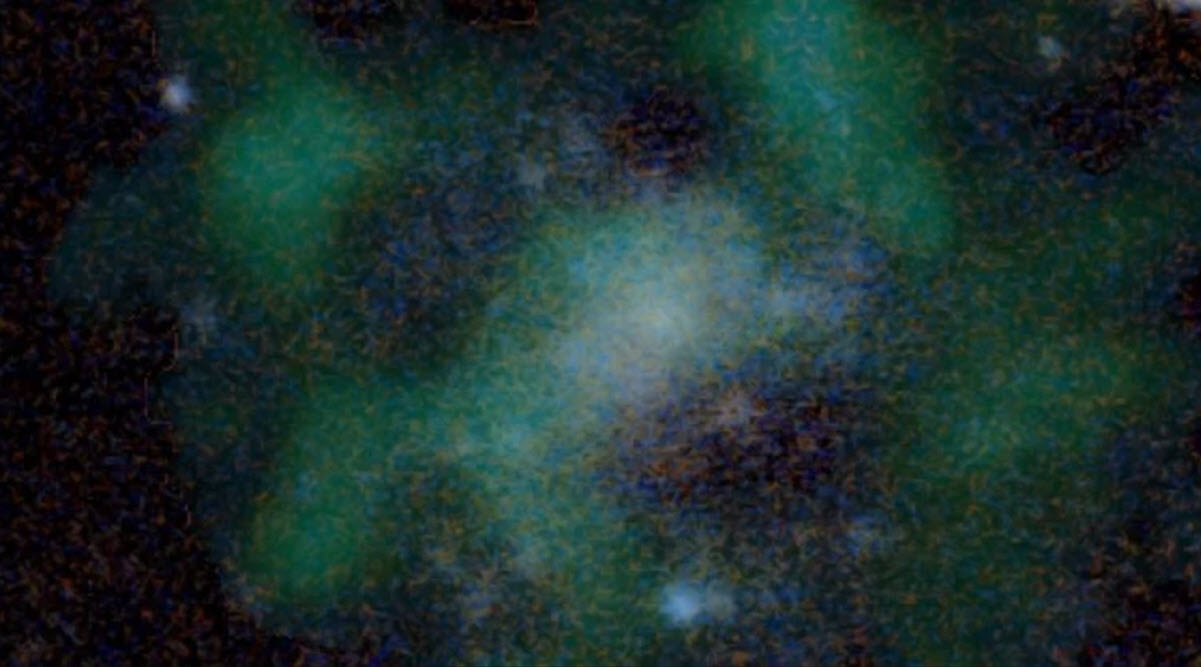Researchers find galaxies that really cannot exist
Researchers from the Netherlands, the United Kingdom and the United States have found no trace of dark matter in AGC 114905, a gas-rich, ultra-diffuse galaxy about 248 million light-years from Earth, despite the most intense observation and in-depth analysis.
The result that is in the Monthly Notices of the Royal Astronomical Society is published and on the preprint server arXiv is available, provides the paradoxical result that there can apparently be galaxies without dark matter, although the assumption of the existence of dark matter is essential for our models of galactic evolution.
Astronomer Pavel Mancera Piña from the University of Groningen in the Netherlands is confused. Now he and his multinational team have the problem “that the theory predicts that there must be dark matter in AGC 114905, but our observations say that it does not exist.” In fact, the difference between theory and observation is getting bigger and bigger, so the researcher.
The starting point for the confusing observation goes back to 2019, when Mancera Piña and his colleagues discovered six galaxies that appear to contain no dark matter. They decided to take a closer look at the galaxies. They were able to rule out assessment errors early on because all six galaxies from the first studies showed similar behavior.
They started now with AGC 114905, a galaxy the size of our Milky Way, but with a thousand times fewer stars and therefore a much lower luminosity. They assumed that a galaxy must contain more dark matter, the less “normal matter” it has. These galaxies are held together by dark matter, so the thesis that turned out to be false.
With the help of the “Karl G. Jansky Very Large Array”, an interferometer for astronomical observations in the radio range, located in the US state of New Mexico, the astronomers started a detailed 40-hour observation mission. In doing so, they surrounded the galaxy with a high spatial resolution in order to then determine the rotation curve of the galaxy, i.e. the orbital speed of the objects in AGC 114905 around their galactic center.
It is one of the most common methods of calculating the amount of dark matter in a galaxy. The presence of dark matter is used to explain particularly short circulation times. In other words, simplified: the more dark matter, the shorter the cycle times.
As it turned out, the rotation curve of AGC 114905 could also be explained without the assumption of dark matter. This means that the amount of dark matter in the galaxy, if not zero, appears to be at least negligible. It can happen. There are explanations for this.
For example, a nearby massive galaxy AGC 114905 could have withdrawn its dark matter. “But there are none,” says Mancera Piña. It has also happened that the researchers simply assumed the wrong distances to the observed galaxy when measuring. But the removal of AGC 114905, the researchers said, is well contained. Another possibility would be that the estimated viewing angles are incorrect. Even then, the instruments could have missed the dark matter. The researchers consider this to be possible, but very unlikely, because the deviations would have to be very large, they say.
The lack of the cosmic binding agent, dark matter, in AGC 114905 remains a mystery at first. The researchers now want to closely observe the six identified galaxies one after the other in the same way to see whether a pattern can be recognized that could offer clues to an explanation. At first, however, perplexity dominates.



